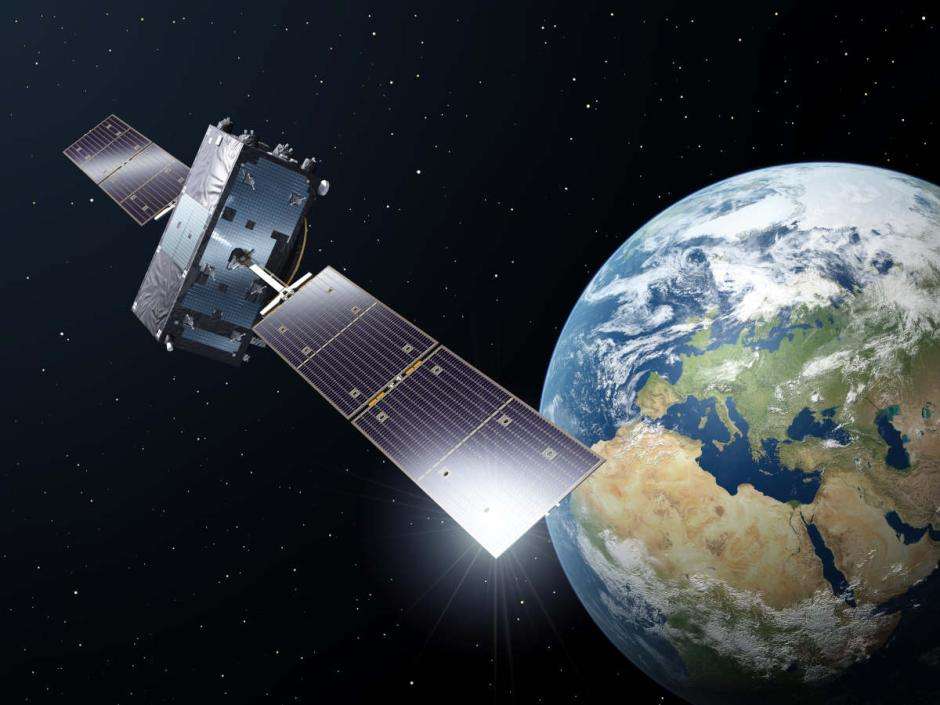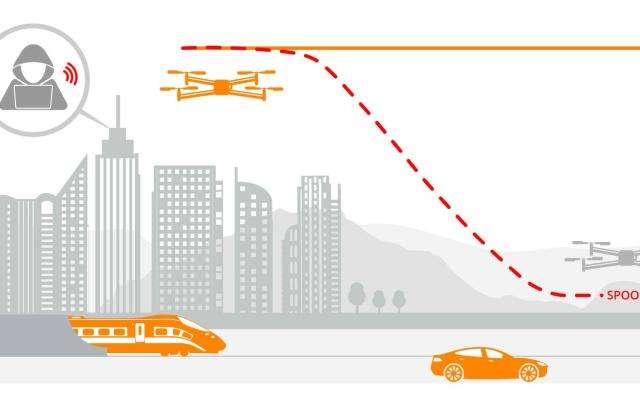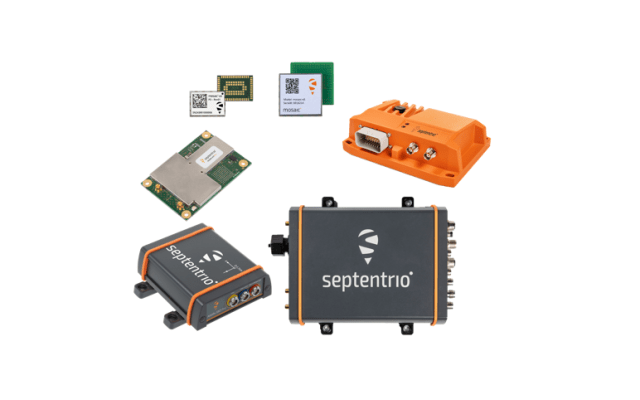Why multi-frequency and multi-constellation matters for GPS/GNSS receivers?

Multi-constellation multi-frequency GNSS receivers are used across many industries today for reliable positioning down to the centimeter level. Among various professional-grade GNSS receivers available today, there is variability in the amount of satellite constellations and signals that a receiver can access. Those receivers that have access to the highest number of constellations and signals offer the best positioning availability, accuracy and resilience even in challenging environments. They also provide access to new and upcoming services that will be made available to users via GNSS signals. These include anti-spoofing services like Galileo OSNMA and GPS Chimera, high accuracy services like Galileo HAS, QZSS CLAS, BeiDou HAS and more.
Multi-constellation technology
Global Navigation Satellite Systems (GNSS) is a system of satellites which broadcast signals from space with positioning and timing information. These signals are picked up by receivers which then use this information to determine their geographic location in terms of longitude, latitude and height.
GNSS vs GPS
So what is the difference between a GPS and a GNSS receiver? A simple GPS receiver only makes use of one global navigation satellite system, while multi-constellation GNSS receivers get information from many such systems at the same time. This allows them to "see" much more satellites at any given time. Septentrio GNSS receivers can connect to any satellite in each GNSS system for maximum positioning availability and accuracy.
| GNSS | Satellites | Coverage |
| GPS | 32 | Global |
| Galileo | 26+ | Global |
| BeiDou | Phase 2: 15+ Phase 3: 25+ |
Global Phase 2 mostly China regional |
| GLONASS | 24 | Global |
| QZSS | 4+ | Over Japan and Asia Pacific |
| NavIC | 7+ | Over India |
Table 1: GNSS constellations, approximate number of satellites and coverage.
Multi-frequency technology
Each one of the GNSS satellites uses one or more frequencies to transmit ranging signals and navigation data. These signals vary in terms of their dependability and availability. The more signals the receiver can access, the more information it can collect from the satellites, the more accurate and reliable the computed position will be.
Navigation GPS in phones, cars and other consumer devices usually uses GPS or GNSS signals on just one frequency (L1). Dual-frequency receivers can receive two signals from each satellite system. Multi-frequency receivers, on the other hand, receive a multitude of signals from any GNSS system. Such multi-frequency receivers push the limits of GNSS technology to achieve the most accurate, reliable, and robust positioning possible.
Upcoming GNSS services
Various GNSS systems are exploring ways to add value to their satellite constellations with high-security and high-accuracy positioning services, which will be available directly via the GNSS signals in the near future. Using future-proof multi-frequency GNSS receivers allows users to take advantage of these upcoming services as soon as they become available.
All of these services, except possibly CAS, will be offered free of charge.
| Service | Added value | GNSS | Signal | Region | Status |
| OSNMA | Anti-spoofing | Galileo | E1b | Global | Operational Beta |
|
Chimera |
Anti-spoofing |
GPS |
L1C |
Global |
Not yet operational |
|
CAS |
Anti-spoofing (commercial) |
Galileo |
E6 |
Global |
Not yet operational |
|
HAS |
High accuracy (decimeter ~20cm) |
Galileo |
E6 |
Global |
Nearing Beta |
|
CLAS |
High accuracy (sub-decimeter) |
QZSS |
L6 |
Japan |
Operational |
|
SLAS |
High accuracy (sub-meter) |
QZSS |
L1S |
Japan |
Not yet operational |
|
PPP-B2b |
High accuracy (decimeter ~20cm) |
BeiDou |
B2b |
China |
Operational Beta |
Table 3: Future-proof multi-frequency receivers enable users to take advantage of upcoming GNSS services
GNSS Positioning in difficult environments
When a GNSS receiver is connected to at least 4 GNSS satellites it can calculate its position (longitude, latitude, height). By using corrections, such as RTK, GNSS receivers can further enhance their accuracy to centimeter level. Still, the more satellites a receiver “sees” the more reliable is its accurate positioning, and the more chance it has to provide positions even in challenging environments.
On a working site, the view of the sky is often partially blocked by machinery, buildings, rocks, or foliage. This means that the number of usable satellites significantly drops. Multi-frequency GNSS receivers which track all the signals from all possible satellite systems, “see” as many satellites as possible, which helps them to be robust in such challenging conditions.
What if the view of the sky is completely obstructed, such as under bridges or under thick foliage? A GNSS/INS system can use an inertial sensor to calculate relative position to the last known GNSS position, filling in the blanks during a temporary GNSS outage.
What are the advantages of using a multi-frequency GNSS receiver?
On top of robust performance in difficult environments there are other advantages of a receiver having access to more GNSS frequencies.
- Removal of ionospheric errors: The main distinguishing factor between single and dual (or multi) frequency receivers is the higher accuracy which can be achieved by removing the first-order ionospheric errors. Charged particles in the ionosphere disturb and delay GNSS signals. When the receiver has access to two or more signals from the same satellite it can remove all major ionospheric errors, bringing stand-alone accuracy from several meters down to a single meter. Read more about IONO+ ionospheric disturbance mitigation.
- Radiofrequency interference robustness: Interference happens when other signals on the same frequency overpower GNSS signals. Interference can be caused by radio amateurs or by neighboring electronic devices and it usually effects one of the GNSS frequencies at a time. Using signals on multiple frequencies allows the receiver to switch to another frequency if interference on one frequency is detected. Read more about Advanced Interference Mitigation & Monitoring technology.
- Better multipath rejection: The L1 signal, which is used in single frequency receivers is susceptible to multipath. Multipath is the distortion of direct line-of-sight signals as they are contaminated by identical signals reflected from objects such as buildings, cars or trees. New GNSS signals such as GPS L5, Galileo L1BC and particularly Galileo E5-AltBoc are inherently more robust to multipath, so a receiver using these signals will suffer less from multipath errors. Additionally, Septentrio multi-frequency GNSS receivers incorporate advanced APME+ algorithms for the highest level of multipath resilience.
- Better accuracy: Having access to many satellites creates redundancy, which enables a statistical analysis of the satellites and their signals. Having such statistical information allows the receiver to detect and remove accidental faults of ranging signals for improved positioning accuracy.
- Compatibility with RTK networks: Being able to receive all GNSS signals makes a receiver fully compatible with all RTK networks, since RTK corrections are provided for a certain signal. For example, an RTK network might provide corrections on E5b and not E5a.
- Fast RTK Fix and heading initialization: For single frequency receivers it can take up to several minutes to have an RTK fix, which is the most precise positioning accuracy possible with RTK. If a receiver can track and use multiple signals, the convergence time to get positioning and heading (dual-antenna receivers) is decreased to several seconds. This is especially important in challenging environments where positioning might be occasionally lost and needs to be reacquired quickly.
- Additional GPS or GNSS spoofing detection: Receivers that make use of multiple frequencies can use these frequencies for additional spoofing checks. By comparing range (distance to satellite) information from various signals, anomalies can be detected and flagged. Find out more about Read more about Advanced Anti-Spoofing Protection for GNSS and GPS receivers and explore the topic more in depth through this popular article: What is GNSS Spoofing and How to Ensure GPS / GNSS Security.
Related content:
- Insight article: GNSS corrections demystified
- Insight article:What is Spoofing and How to Ensure GPS Security
- Webinar: Corrections services demystified
- Webinar: Building New Realities with GNSS-INS
- Webinar: GNSS hacking, from satellite signals to hardware/software cybersecurity
- Brochure: GNSS Interference: counteracting jamming and spoofing




